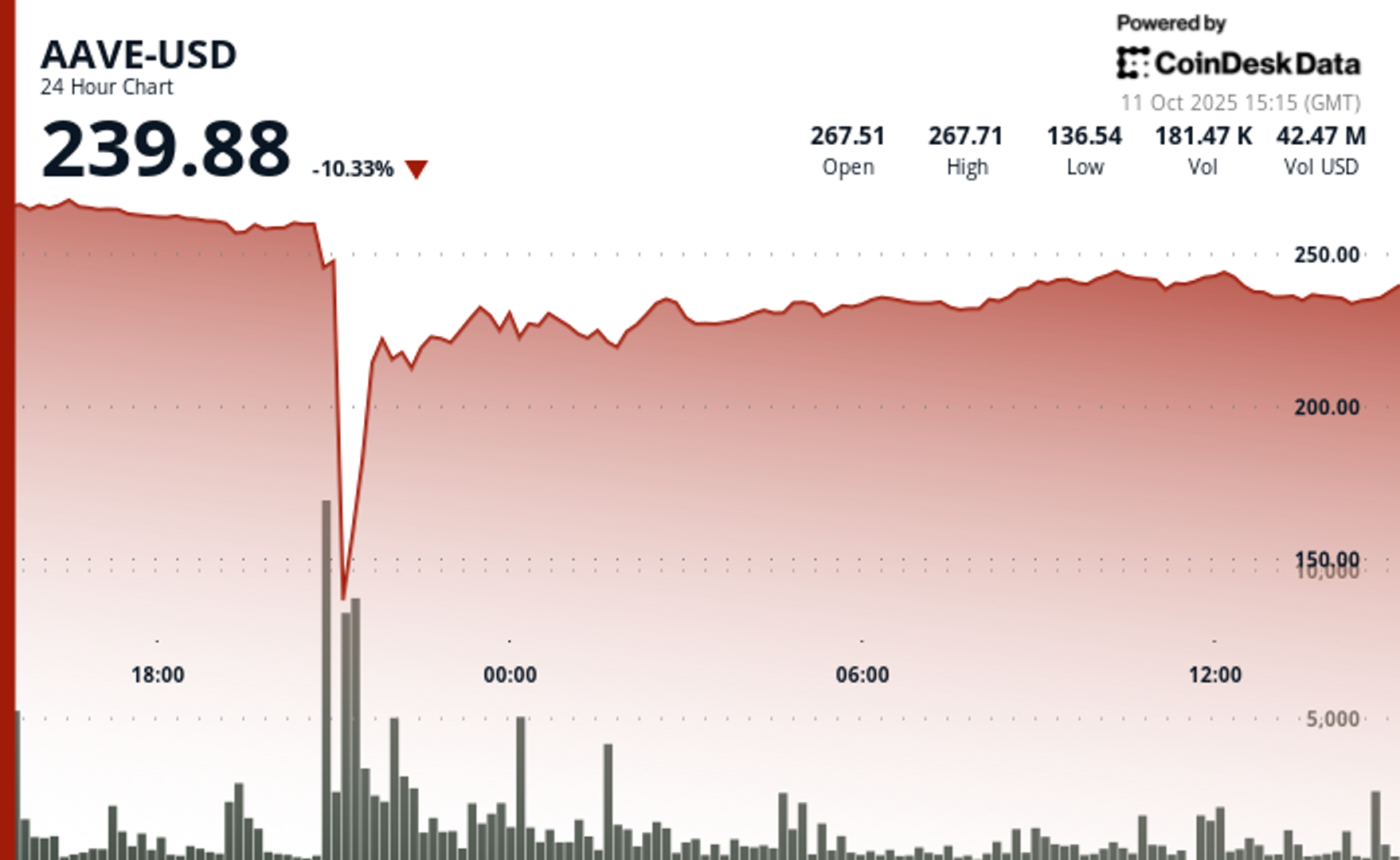Uncategorized
The Ethereum Foundation Has Lost Its Way

The Ethereum Foundation is a paradox. Despite its commitment to decentralization, it operates as a centralized entity, with a director, a treasury, paid developers, and an inner circle. These structures, while necessary for coordination, create tensions with Ethereum’s decentralized ethos.
The Foundation Today
It is not widely known, but the current foundation was constructed in a less than ideal way. The previous director, Ming, was ousted in a coordinated effort by a group of people who have never been publicly identified or held accountable for it. I spoke with Ming days before her removal and she assured me she had no intent of leaving. I was later given information about who was responsible for her removal, but was not given much insight as to why. I have heard that Ming was a bit of a micromanager, and that she had an intensity that rubbed some people the wrong way. I’m sure there’s truth to that, but these stories are often window dressing for deeper truths.
I can infer some good-faith reasons based on the way the org has been run over the past seven years. A very important role of the organization is to protect against internal power struggles as well as external capture. These are noble goals and ones they seem to have accomplished effectively.
Another major focus seems to have been minimizing the public footprint of the organization and constructing it in such a way that it would not draw the ire of governments who might hold them accountable if the political winds shifted against them. But as political winds shift, and the marketplace provides alternatives, the organization itself must adapt, both in form and function.
Ethereum was in its birth a visionary project, not simply technological in nature. It pointed towards a possibility of previously unimaginable futures through the empowerment of the individual to do what had previously taken billions of dollars, thousands of people, or millions of man hours to accomplish.
The Ethereum Foundation, in its current incarnation, designed to minimize threats both internal and external, has lost that vision.
Lead with Vision
Ethereum’s next phase demands more than just technical research and coordinating conferences. It requires visionary leadership — someone who understands not just the technology but its broader social, philosophical, and political implications. This leader must inspire a new generation of builders, connect technology with human needs, and navigate the complexities of the political landscape without compromising Ethereum’s ethos.
Read more: Sam Kessler — Ethereum’s Vitalik Buterin Goes On Offense Amid Major Leadership Shake-up
The Ethereum whitepaper was not just a technical document; it was a beacon that allowed like-minded people to come together under a shared vision. In the face of chaos, uncertainty, and frequent conflicts, it served as a guiding light. What ensured our collective success was not the absence of challenges but the clarity of the mountaintop we were striving toward. This common vision allowed us to stay aligned even when disagreements and setbacks arose.
It was an idea whose time had come—a blueprint that transcended the individuals behind it and inspired a community to persevere, innovate, and ultimately bring that vision to life. Without it, the project could have easily unraveled under the weight of its ambition.
Be Transparent, Focus More on the Community
Transparency is equally critical. Over the past few years, the Foundation has retreated into the shadows, leaving the community feeling disconnected. But ethereum would have been nothing without its community, and it will be nothing if it loses it. A community must be managed, curated, and cared for. It requires the onboarding of new people, with new energy, and new ideas, bound by a common vision. This also includes the teams who build on ethereum.
Seize the Moment
From a legal perspective, Ethereum must embrace the opportunity to engage with lawmakers. The current American political climate is uniquely favorable, and inaction now risks losing momentum. America has elected a President who not only owns ether, but has himself launched a lending protocol on top of it. As of now, we are inhabiting a political landscape which was unthinkable even a year ago, when Democrats surprised so many of us by openly declaring war on crypto, and the future seemed uncertain. There has never been a better time than now to ensure that the promise of crypto is realized.
While maintaining political neutrality, the Foundation can create or promote frameworks that encourage compliance and innovation. Without these frameworks, the crypto space has been plagued by speculative ventures—ICOs, DAOs, NFTs—that skirt regulations rather than working within them to build sustainable use cases.
Lead by Example
The Ethereum Foundation should also consider utilizing its own technology to coordinate its operations and demonstrate the transformative potential of decentralized systems. By adopting Ethereum-based tools and protocols, the Foundation could potentially manage governance, treasury disbursements, decision-making processes, and community engagement.
This approach would not only demonstrate Ethereum’s capabilities but also reinforce trust within the community by embodying the principles of decentralization and transparency that the project champions. Additionally, leveraging Ethereum’s ecosystem for coordination could serve as a real-world case study, inspiring developers and organizations to explore similar solutions. By integrating its technology into its own operations, the Foundation would highlight the real-world utility of the platform while setting a precedent for how decentralized systems can effectively manage complex organizations.
Be Accountable, Build the Future
Finally, financial accountability must become a priority.
With $100 million spent annually, the Foundation should deliver measurable outcomes. Despite significant investment in technical research, user experience in crypto remains stagnant. Improving UX, UI, key management, and other security and usability problems isn’t insurmountable but has been severely neglected. This oversight reflects a blind spot which must be addressed before wider adoption is possible.
Ethereum began as more than just a technological project—it was a visionary movement for empowering individuals to achieve what once required massive resources. That vision is at risk of being lost. To reignite it, the Foundation must embrace transparency, invest in leadership, engage the community, and step into the legal and political spotlight.
Ethereum’s story is one of triumph over chaos, and a testament to the power of collective vision. To ensure its future, the Ethereum Foundation must transform itself from a reactive institution into a proactive visionary force. For ethereum. For the community. For the greater good. For the future.
With Love,
Texture
Business
AAVE Sees 64% Flash Crash as DeFi Protocol Endures ‘Largest Stress Test’

The native token of Aave (AAVE), the largest decentralized crypto lending protocol, was caught in the middle of Friday’s crypto flash crash while the protocol proved resilient in a historic liquidation cascade.
The token, trading at around $270 earlier in Friday, nosedived as much as 64% later in the session to touch $100, the lowest level in 14 months. It then staged a rapid rebound to near $240, still down 10% over the past 24 hours.
Stani Kulechov, founder of Aave, described Friday’s event as the «largest stress test» ever for the protocol and its $75 billion lending infrastructure.
The platform enables investors to lend and borrow digital assets without conventional intermediaries, using innovative mechanisms such as flash loans. Despite the extreme volatility, Aave’s performance underscores the evolving maturity and resilience of DeFi markets.
«The protocol operated flawlessly, automatically liquidating a record $180M worth of collateral in just one hour, without any human intervention,» Kulechov said in a Friday X post. «Once again, Aave has proven its resilience.»
Key price action:
- AAVE sustained a dramatic flash crash on Friday, declining 64% from $278.27 to $100.18 before recuperating to $240.09.
- The DeFi protocol demonstrated remarkable resilience with its native token’s 140% recovery from the intraday lows, underpinned by substantial trading volume of 570,838 units.
- Following the volatility, AAVE entered consolidation territory within a narrow $237.71-$242.80 range as markets digested the dramatic price action.
Technical Indicators Summary
- Price range of $179.12 representing 64% volatility during the 24-hour period.
- Volume surged to 570,838 units, substantially exceeding the 175,000 average.
- Near-term resistance identified at $242.80 capping rebound during consolidation phase.
Disclaimer: Parts of this article were generated with the assistance from AI tools and reviewed by our editorial team to ensure accuracy and adherence to our standards. For more information, see CoinDesk’s full AI Policy.
Business
Blockchain Will Drive the Agent-to-Agent AI Marketplace Boom

AI agents, software systems that use AI to pursue goals and complete tasks on behalf of users, are proliferating. Think of them as digital assistants that can make decisions and take actions towards goals you set without needing step-by-step instructions — from GPT-powered calendar managers to trading bots, the number of use cases is expanding rapidly. As their role expands across the economy, we have to build the right infrastructure that will allow these agents to communicate, collaborate and trade with one another in an open marketplace.
Big tech players like Google and AWS are building early marketplaces and commerce protocols, but that raises the question: will they aim to extract massive rents through walled gardens once more? Agents’ capabilities are clearly rising, almost daily, with the arrival of new models and architectures. What’s at risk is whether these agents will be truly autonomous.
Autonomous agents are valuable because they unlock a novel user experience: a shift from software as passive or reactive tools to active and even proactive partners. Instead of waiting for instructions, they can anticipate needs, adapt to changing conditions, and coordinate with other systems in real time, without the user’s constant input or presence. This autonomy in decision-making makes them uniquely suited for a world where speed and complexity outpace human decision-making.
Naturally, some worry about what greater decision-making autonomy means for work and accountability — but I see it as an opportunity. When agents handle repetitive, time-intensive tasks and parallelize what previously had to be done in sequence, they expand our productive capacity as humans — freeing people to engage in work that demands creativity, judgment, composition and meaningful connection. This isn’t make-believe, humanity has been there before: the arrival of corporations allowed entrepreneurs to create entirely new products and levels of wealth previously unthought of. AI agents have the potential to bring that capability to everyone.
On the intelligence side, truly autonomous decision-making requires AI agent infrastructure that is open source and transparent. OpenAI’s recent OSS release is a good step. Chinese labs, such as DeepSeek (DeepSeek), Moonshot AI (Kimi K2) and Alibaba (Qwen 3), have moved even quicker.
However, autonomy is not purely tied to intelligence and decision making. Without resources, an AI agent has little means to enact change in the real world. Hence, for agents to be truly autonomous they need to have access to resources and self-custody their assets. Programmable, permissionless, and composable blockchains are the ideal substrate for agents to do so.
Picture two scenarios. One where AI agents operate within a Web 2 platform like AWS or Google. They exist within the limited parameters set by these platforms in what is essentially a closed and permissioned environment. Now imagine a decentralized marketplace that spans many blockchain ecosystems. Developers can compose different sets of environments and parameters, therefore, the scope available to AI agents to operate is unlimited, accessible globally, and can evolve over time. One scenario looks like a toy idea of a marketplace, and the other is an actual global economy.
In other words, to truly scale not just AI agent adoption, but agent-to-agent commerce, we need rails that only blockchains can offer.
The Limits of Centralized Marketplaces
AWS recently announced an agent-to-agent marketplace aimed at addressing the growing demand for ready-made agents. But their approach inherits the same inefficiencies and limitations that have long plagued siloed systems. Agents must wait for human verification, rely on closed APIs and operate in environments where transparency is optional, if it exists at all.
To act autonomously and at scale, agents can’t be boxed into closed ecosystems that restrict functionality, pose platform risks, impose opaque fees, or make it impossible to verify what actions were taken and why.
Decentralization Scales Agent Systems
An open ecosystem allows for agents to act on behalf of users, coordinate with other agents, and operate across services without permissioned barriers.
Blockchains already offer the key tools needed. Smart contracts allow agents to perform tasks automatically, with rules embedded in code, while stablecoins and tokens enable instant, global value transfers without payment friction. Smart accounts, which are programmable blockchain wallets like Safe, allow users to restrict agents in their activity and scope (via guards). For instance, an agent may only be allowed to use whitelisted protocols. These tools allow AI agents not only to behave expansively but also to be contained within risk parameters defined by the end user. For example, this could be setting spending limits, requiring multi-signatures for approvals, or restricting agents to whitelisted protocols.
Blockchain also provides the transparency needed so users can audit agent decisions, even when they aren’t directly involved. At the same time, this doesn’t mean that all agent-to-agent interactions need to happen onchain. E.g. AI agents can use offchain APIs with access constraints defined and payments executed onchain.
In short, decentralized infrastructure gives agents the tools to operate more freely and efficiently than closed systems allow.
It’s Already Happening Onchain
While centralized players are still refining their agent strategies, blockchain is already enabling early forms of agent-to-agent interaction. Onchain agents are already exhibiting more advanced behavior like purchasing predictions and data from other agents. And as more open frameworks emerge, developers are building agents that can access services, make payments, and even subscribe to other agents — all without human involvement.
Protocols are already implementing the next step: monetization. With open marketplaces, people and businesses are able to rent agents, earn from specialized ones, and build new services that plug directly into this agent economy. Customisation of payment models such as subscription, one-off payments, or bundled packages will also be key in facilitating different user needs. This will unlock an entirely new model of economic participation.
Why This Distinction Matters
Without open systems, fragmentation breaks the promise of seamless AI support. An agent can easily bring tasks to completion if it stays within an individual ecosystem, like coordinating between different Google apps. However, where third-party platforms are necessary (across social, travel, finance, etc), an open onchain marketplace will allow agents to programmatically acquire the various services and goods they need to complete a user’s request.
Decentralized systems avoid these limitations. Users can own, modify, and deploy agents tailored to their needs without relying on vendor-controlled environments.
We’ve already seen this work in DeFi, with DeFi legos. Bots automate lending strategies, manage positions, and rebalance portfolios, sometimes better than any human could. Now, that same approach is being applied as “agent legos” across sectors including logistics, gaming, customer support, and more.
The Path Forward
The agent economy is growing fast. What we build now will shape how it functions and for whom it works. If we rely solely on centralized systems, we risk creating another generation of AI tools that feel useful but ultimately serve the platform, not the person.
Blockchain changes that. It enables systems where agents act on your behalf, earn on your ideas, and plug into a broader, open marketplace.
If we want agents that collaborate, transact, and evolve without constraint, then the future of agent-to-agent marketplaces must live onchain.
Business
‘Largest Ever’ Crypto Liquidation Event Wipes Out 6,300 Wallets on Hyperliquid

More than 1,000 wallets on Hyperliquid were completely liquidated during the recent violent crypto sell-off, which erased over $1.23 billion in trader capital on the platform, according to data from its leaderboard.
In total, 6,300 wallets are now in the red, with 205 losing over $1 million each according to the data, which was first spotted by Lookonchain. More than 1,000 accounts saw losses of at least $100,000.
The wipeout came as crypto markets reeled from a global risk-off event triggered by U.S. President Donald Trump’s announcement of a 100% additional tariff on Chinese imports.
The move spooked investors across asset classes and sent cryptocurrency prices tumbling. Bitcoin briefly dropped below $110,000 and ether fell under $3,700, while the broader market as measured by the CoinDesk 20 (CD20) index dropped by 15% at one point.
The broad sell-off led to over $19 billion in liquidations over a 24 hours period, making it the largest single-day liquidation event in crypto history by dollar value. According to CoinGlass, the “actual total” of liquidations is “likely much higher” as leading crypto exchange Binance doesn’t report as quickly as other platforms.
Leaderboard data reviewed by CoinDesk shows the top 100 traders on Hyperliquid gained $1.69 billion collectively.
In comparison, the top 100 losers dropped $743.5 million, leaving a net profit of $951 million concentrated among a handful of highly leveraged short sellers.
The biggest winner was wallet 0x5273…065f, which made over $700 million from short positions, while the largest loser, “TheWhiteWhale,” dropped $62.5 million.
Among the victims of the flush is crypto personality Jeffrey Huang, known online as Machi Big Brother, who once launched a defamation suit against ZachXBT, losing almost the entire value of his wallet, amounting to $14 million.
«Was fun while it lasted,» he posted on X.
Adding to the uncertainty, the ongoing U.S. government shutdown has delayed the release of key economic data. Without official indicators, markets are flying blind at a time when geopolitical risk is rising.
-

 Business12 месяцев ago
Business12 месяцев ago3 Ways to make your business presentation more relatable
-

 Fashion12 месяцев ago
Fashion12 месяцев agoAccording to Dior Couture, this taboo fashion accessory is back
-

 Entertainment12 месяцев ago
Entertainment12 месяцев ago10 Artists who retired from music and made a comeback
-

 Entertainment12 месяцев ago
Entertainment12 месяцев ago\’Better Call Saul\’ has been renewed for a fourth season
-

 Entertainment12 месяцев ago
Entertainment12 месяцев agoNew Season 8 Walking Dead trailer flashes forward in time
-

 Business12 месяцев ago
Business12 месяцев ago15 Habits that could be hurting your business relationships
-

 Entertainment12 месяцев ago
Entertainment12 месяцев agoMeet Superman\’s grandfather in new trailer for Krypton
-

 Entertainment12 месяцев ago
Entertainment12 месяцев agoDisney\’s live-action Aladdin finally finds its stars





